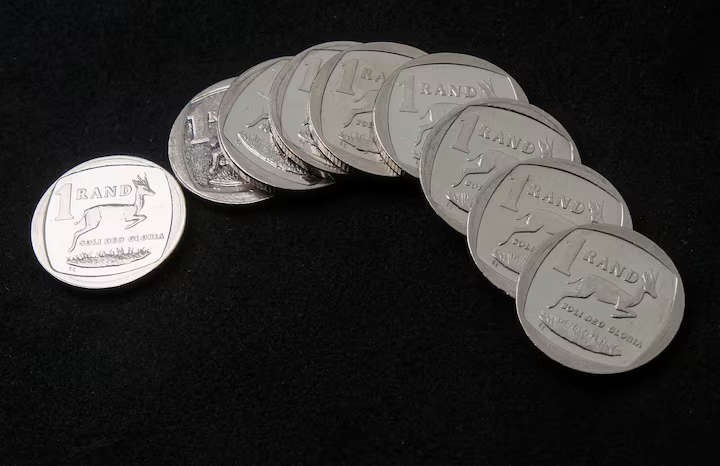
JOHANNESBURG, April 11 (Reuters) – The South African rand gained ground against a weaker dollar on Friday, but analysts said it remained susceptible to twists in the global trade war and the risk that South Africa’s coalition government might split.
At 1230 GMT the rand was trading at 19.2025 against the dollar, about 1.3% stronger than Thursday’s closing level.
Ithas been highly volatile this week, falling to a record low against the dollar on Wednesday before staging a sharp relief rally after U.S. President Donald Trump announced a 90-day pause in higher tariff rates on dozens of trading partners including South Africa.
China increased its tariffs on U.S. imports to 125% on Friday, raising the stakes in a confrontation between the world’s two largest economies that threatens to upend global supply chains.
The dollar was last trading more than 0.7% weaker against a basket of currencies, helping currencies such as the rand to recover.
Analysts said the rand would also continue to move on news about the future of South Africa’s generally business-friendly Government of National Unity.
The two biggest parties in the coalition, the African National Congress (ANC) and the pro-business Democratic Alliance (DA), clashed over the budget last week, with the DA voting against it in parliament and challenging it in court.
Isaac Matshego, an economist at Nedbank, said markets were worried about the direction of economic policy if the coalition collapses.
“A shift towards more populist policies if the ANC partners with the leftist parties in a new GNU would hurt confidence and put the rand under renewed pressure,” he said.
The ANC and DA are due to meet on Saturday to discuss the budget impasse.
On the Johannesburg Stock Exchange, the blue-chip Top 40 index was up about 0.2%, after a 4.5% rally on Thursday.
The benchmark 2030 government bond was marginally weaker, as the yield rose 2.5 basis points to 9.265%.
(Reporting by Tannur Anders and Sfundo Parakozov;Graphic by Tannur Anders;Editing by Alexander Winning, Gareth Jones and Kevin Liffey)

